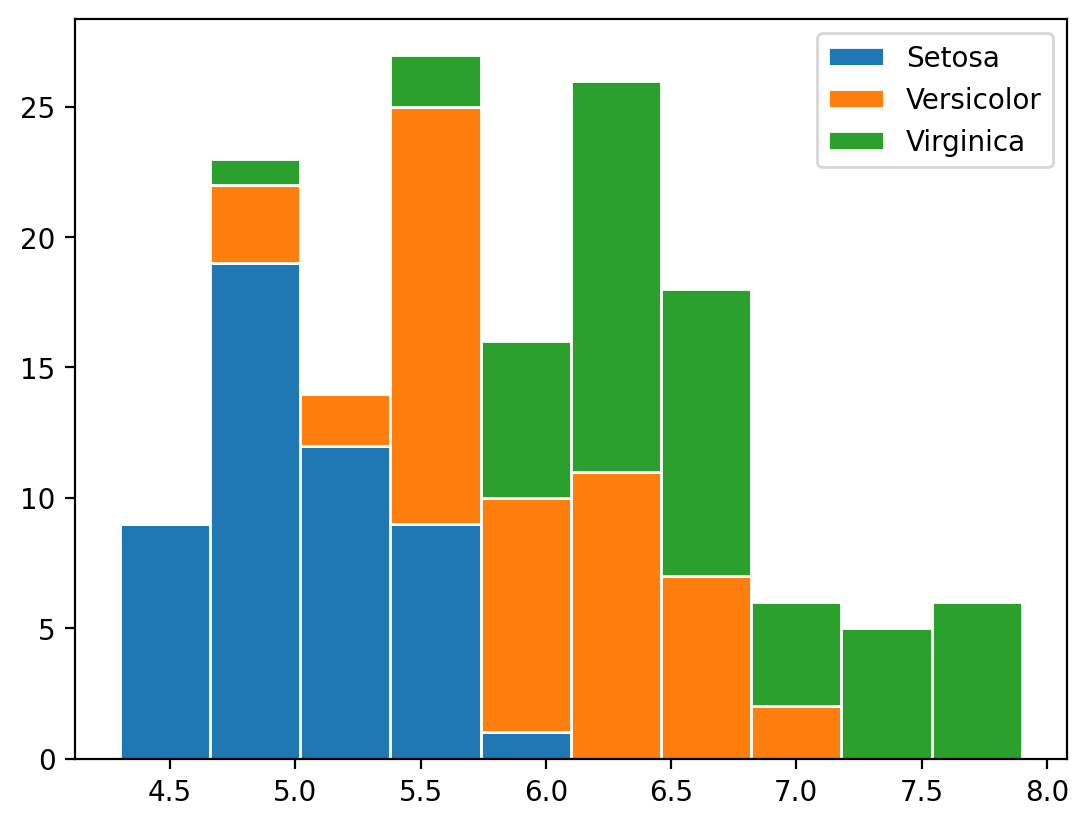


Multiply this with the number of multi-processors in the hardware. Usually, we use kernel as this: _global_ void kernelname(.A minimum of 192 threads (better 256) are required to be active per Multi processor. I cannot upload image, because low reputation.įirst, see this figure Grid of thread blocks from the CUDA official document So, all index of 0, 1, 2, 3, 4, 5, 6, 7, 8, 9 can access by tid value. 2 loop: 7+2*2=11 ( but this value is false, while out!) 2 loop: 6+2*2=10 ( but this value is false, while out!) 3 loop: 9+2*2=13 ( but this value is false, while out!) 3 loop: 8+2*2=12 ( but this value is false, while out!) There is a calculation in while loop tid += blockDim.x + gridDim.x in while
Histogram dim3 griddim how to#
How to access rest of index 4, 5, 6, 7, 8, 9. > tid = threadIdx.x + blockIdx.x * blockDim.x In add kernel function, we can access 0, 1, 2, 3 index of thread Our number of thread are 4, because 2*2(blocks * thread). GridDim.y : 1 this means number of block of yīlockDim.x : 2 this means number of thread of x in a blockīlockDim.y : 1 this means number of thread of y in a block In this source code, gridDim.x : 2 this means number of block of x See the page about meaning of threadIdx, blockIdx, blockDim, gridDim in the cuda detail. How to access all 10 arrays only by 4 threads.
Histogram dim3 griddim code#
This source code is example of this case. Int tid = threadIdx.x + blockIdx.x * gridDim.x ĬudaMemcpy(c, dev_c, N*sizeof(int), cudaMemcpyDeviceToHost ) īecause we have to create reasonably small number of threads, if N is larger than 10 ex) 33*1024. In this source code, we even have 4 threds, the kernel function can access all of 10 arrays. As long as you don't exceed your hardware limits (for modern cards, you can have a maximum of 2^10 threads per block and 2^16 - 1 blocks per grid)

When you launch your kernel you specify the grid and block dimensions, and you're the one who has to enforce the mapping to your data inside your kernel. This mapping is pretty central to any kernel launch, and you're the one who determines how it should be done. I'm not sure where that would be relevant, but it all depends on your application and how you map your threads to your data. Hence in calculating threadIdx.x + blockIdx.x*blockDim.x, you would have values within the range defined by: [0, 128) + 128 * [1, 10), which would mean your tid values would range from Then in your kernel had threadIdx.x + blockIdx.x*blockDim.x you would effectively have: So if you launch a kernel with parameters dim3 block_dim(128,1,1) This is because your blockDim.x would be the size of each block, and your gridDim.x would be the total number of blocks. In that case, your tid+=blockDim.x * gridDim.x line would in effect be the unique index of each thread within your grid. This is especially revlevant if you're working with 1D arrays. With that said, it's common to only use the x-dimension of the blocks and grids, which is what it looks like the code in your question is doing. In turn, each block is a 3-dimensional cube of threads. Each of its elements is a block, such that a grid declared as dim3 grid(10, 10, 2) would have 10*10*2 total blocks. You seem to be a bit confused about the thread hierachy that CUDA has in a nutshell, for a kernel there will be 1 grid, (which I always visualize as a 3-dimensional cube). ThreadIdx: This variable contains the thread index within the block. GridDim: This variable contains the dimensions of the grid.īlockIdx: This variable contains the block index within the grid.īlockDim: This variable and contains the dimensions of the block. Paraphrased from the CUDA Programming Guide: It would be 4 hours well spent, if you want to understand these concepts better. You might want to consider taking an introductory CUDA webinars For example, the first 4 units. This topic, sometimes called a "grid-striding loop", is further discussed in this blog article. In this case, after processing one loop iteration, each thread must then move to the next unprocessed location, which is given by tid+=blockDim.x*gridDim.x In effect, the entire grid of threads is jumping through the 1-D array of data, a grid-width at a time. In particular, when the total threads in the x-dimension ( gridDim.x*blockDim.x) is less than the size of the array I wish to process, then it's common practice to create a loop and have the grid of threads move through the entire array. In the CUDA documentation, these variables are defined here It's common practice when handling 1-D data to only create 1-D blocks and grids. blockDim.x * gridDim.x gives the number of threads in a grid (in the x direction, in this case)īlock and grid variables can be 1, 2, or 3 dimensional.gridDim.x,y,z gives the number of blocks in a grid, in the.blockDim.x,y,z gives the number of threads in a block, in the.


 0 kommentar(er)
0 kommentar(er)
